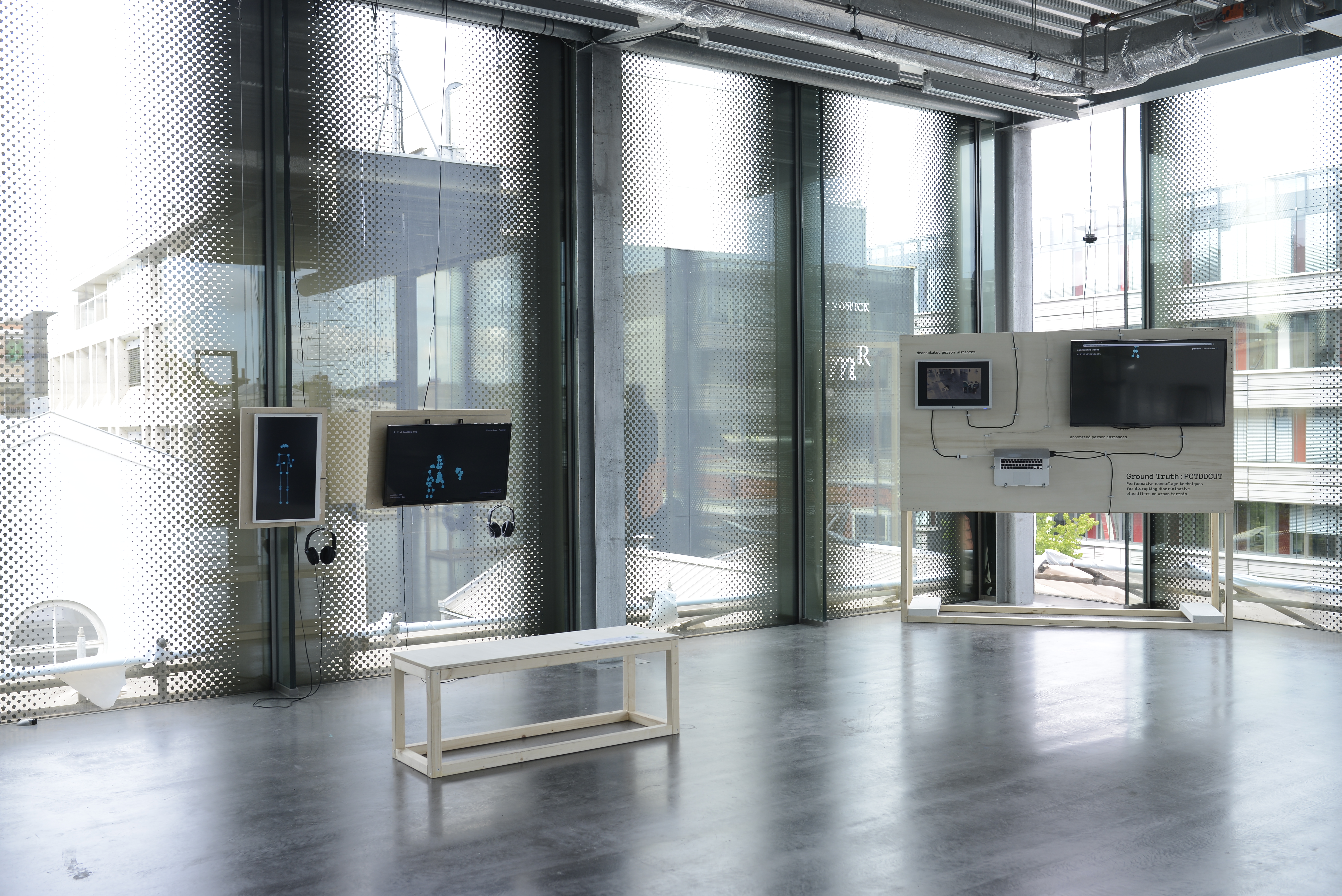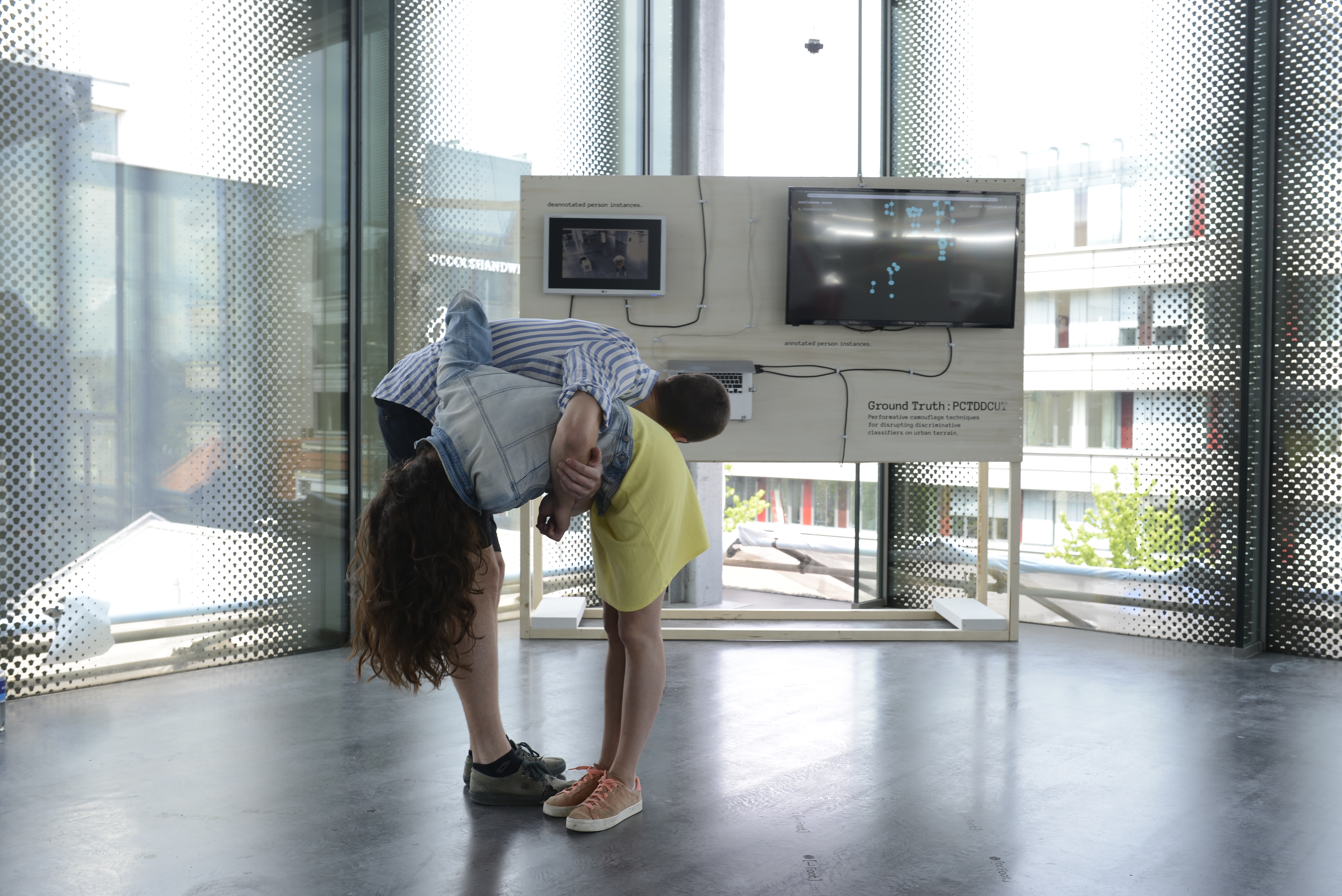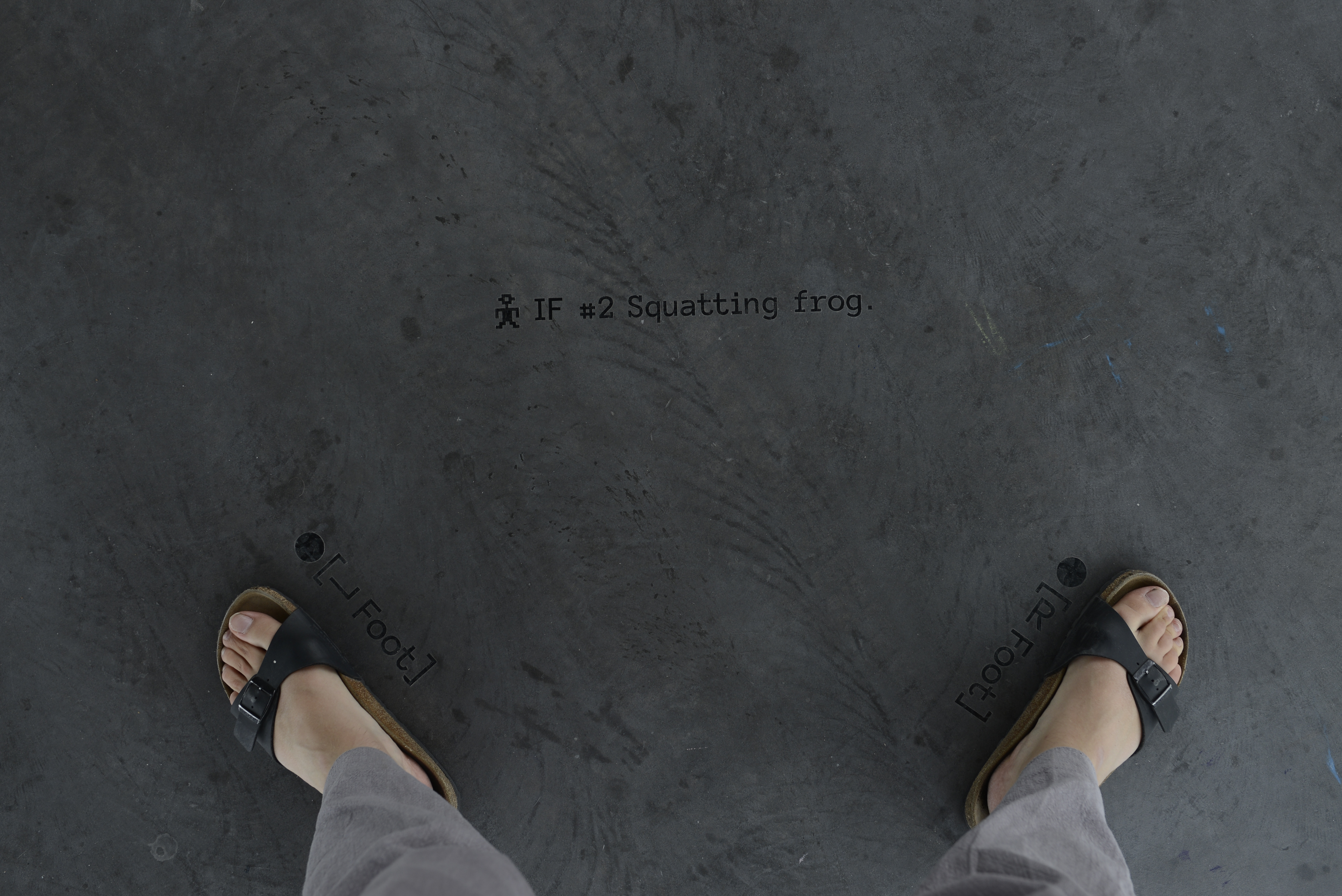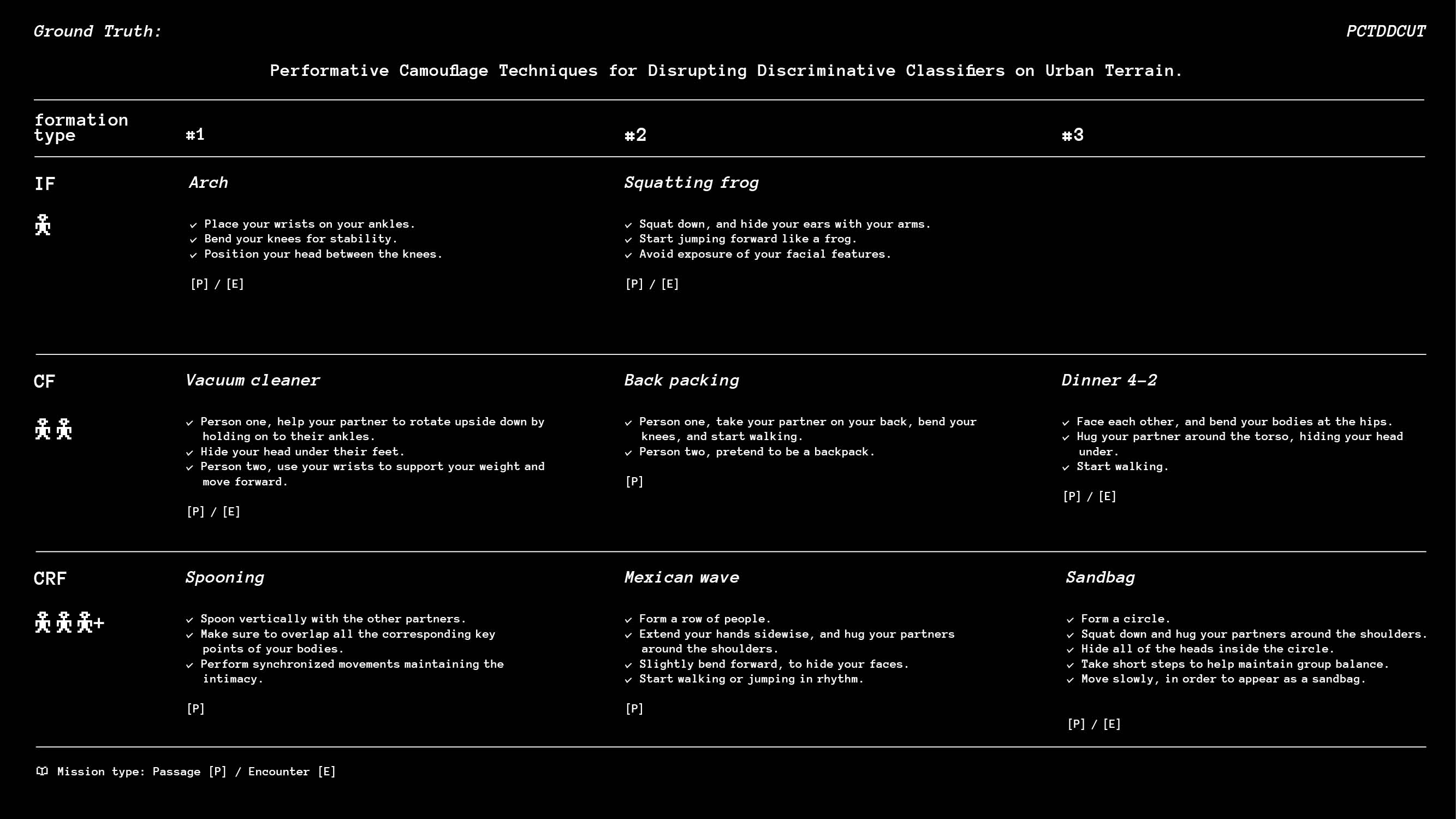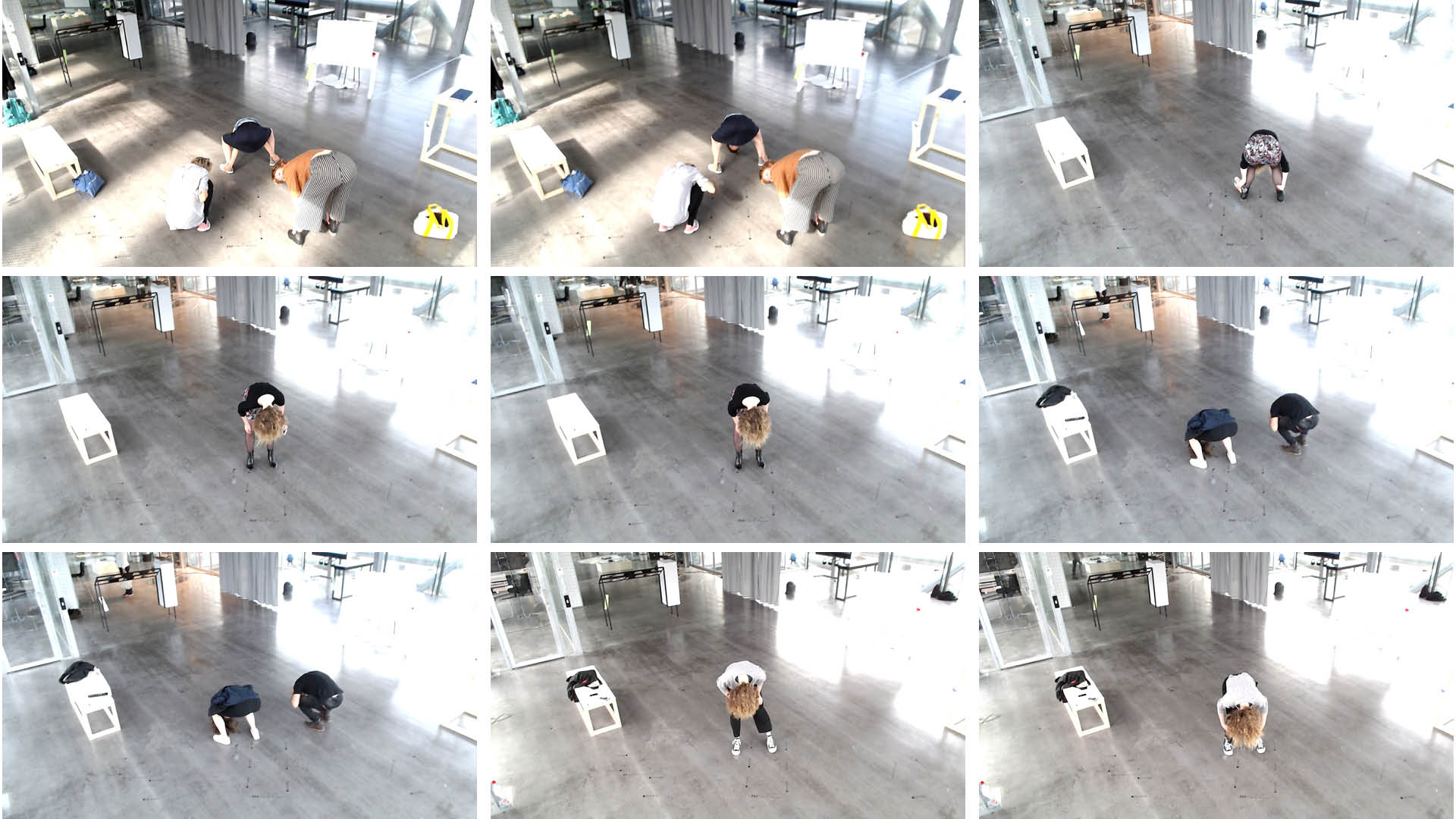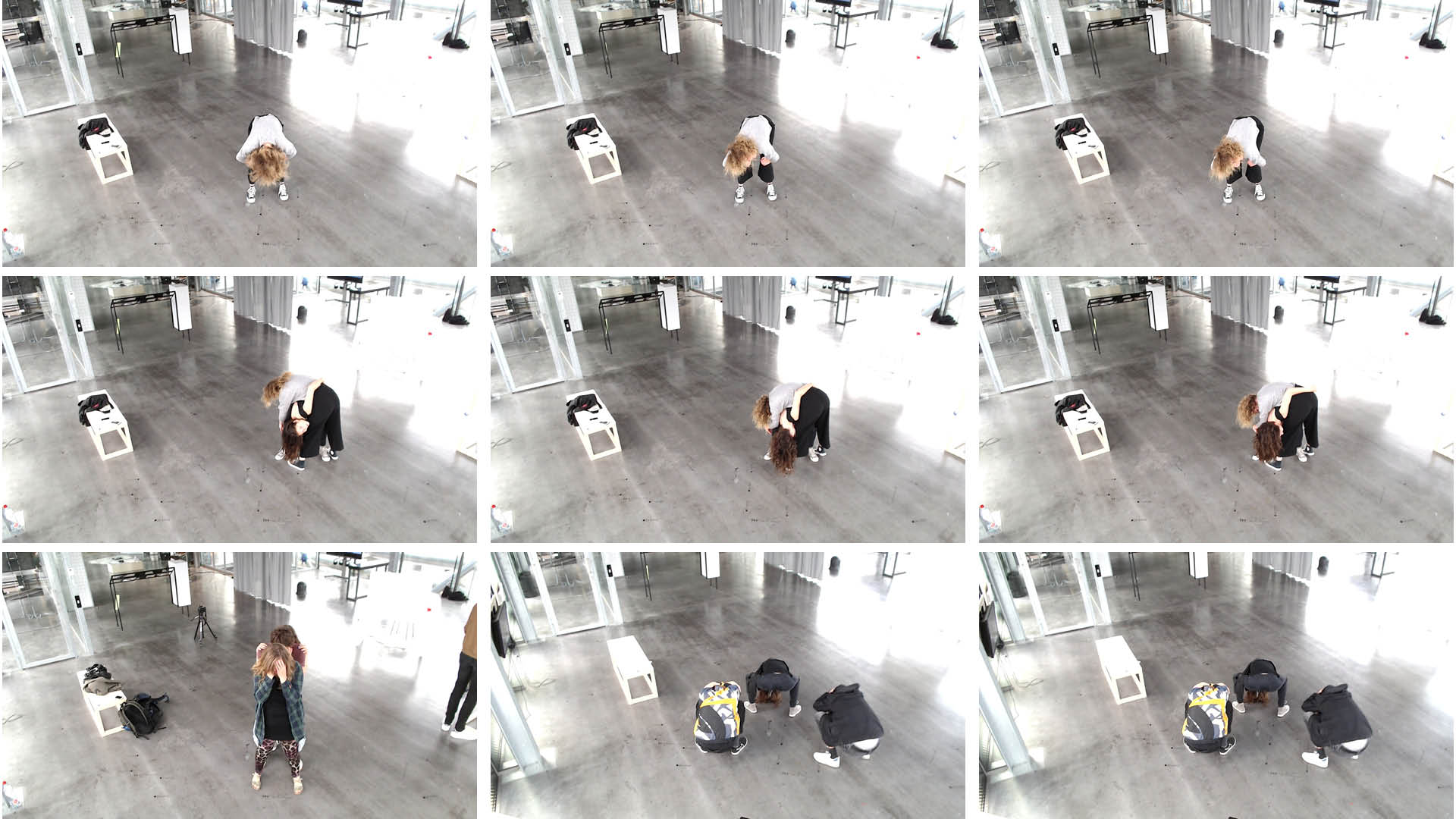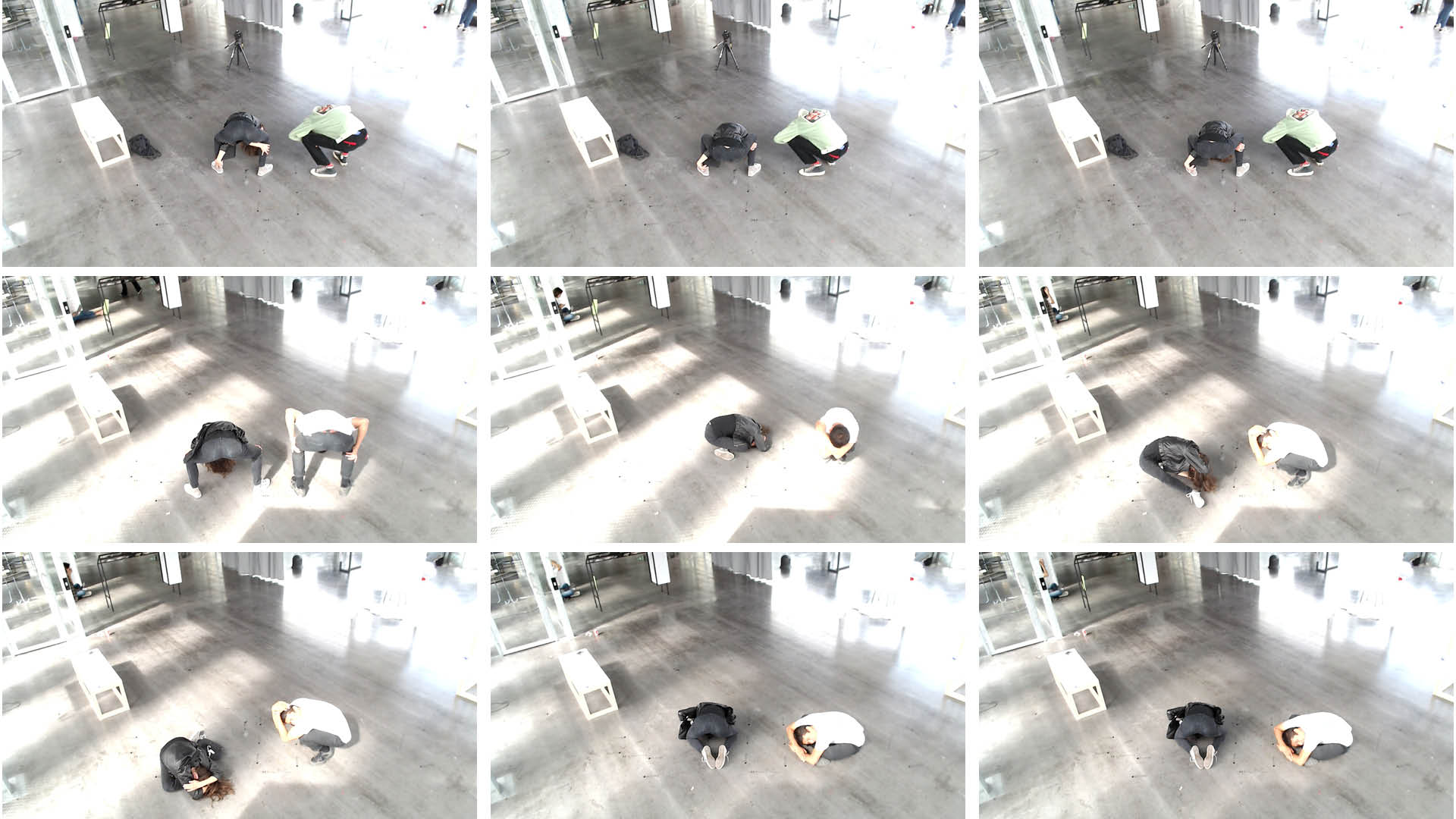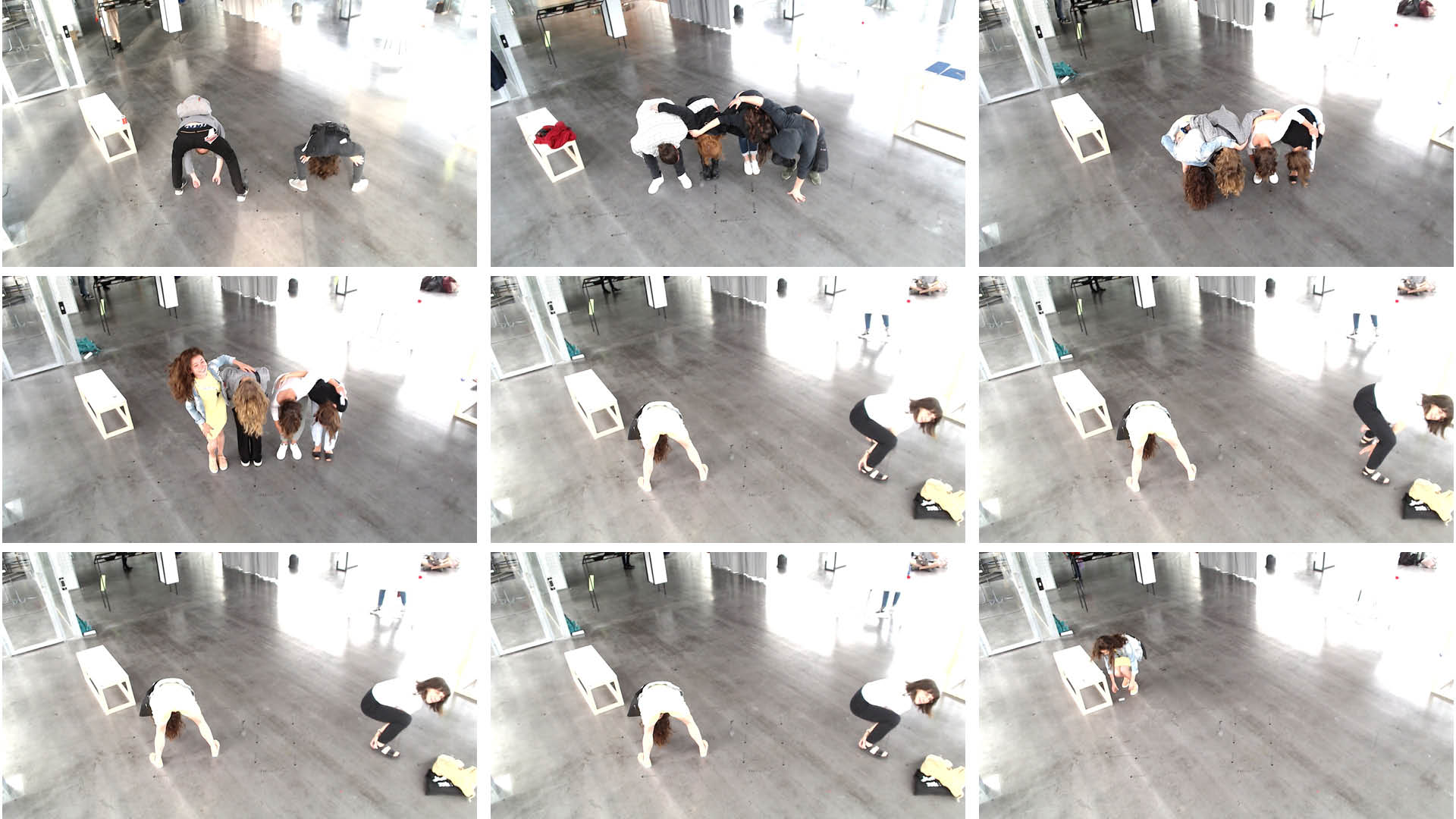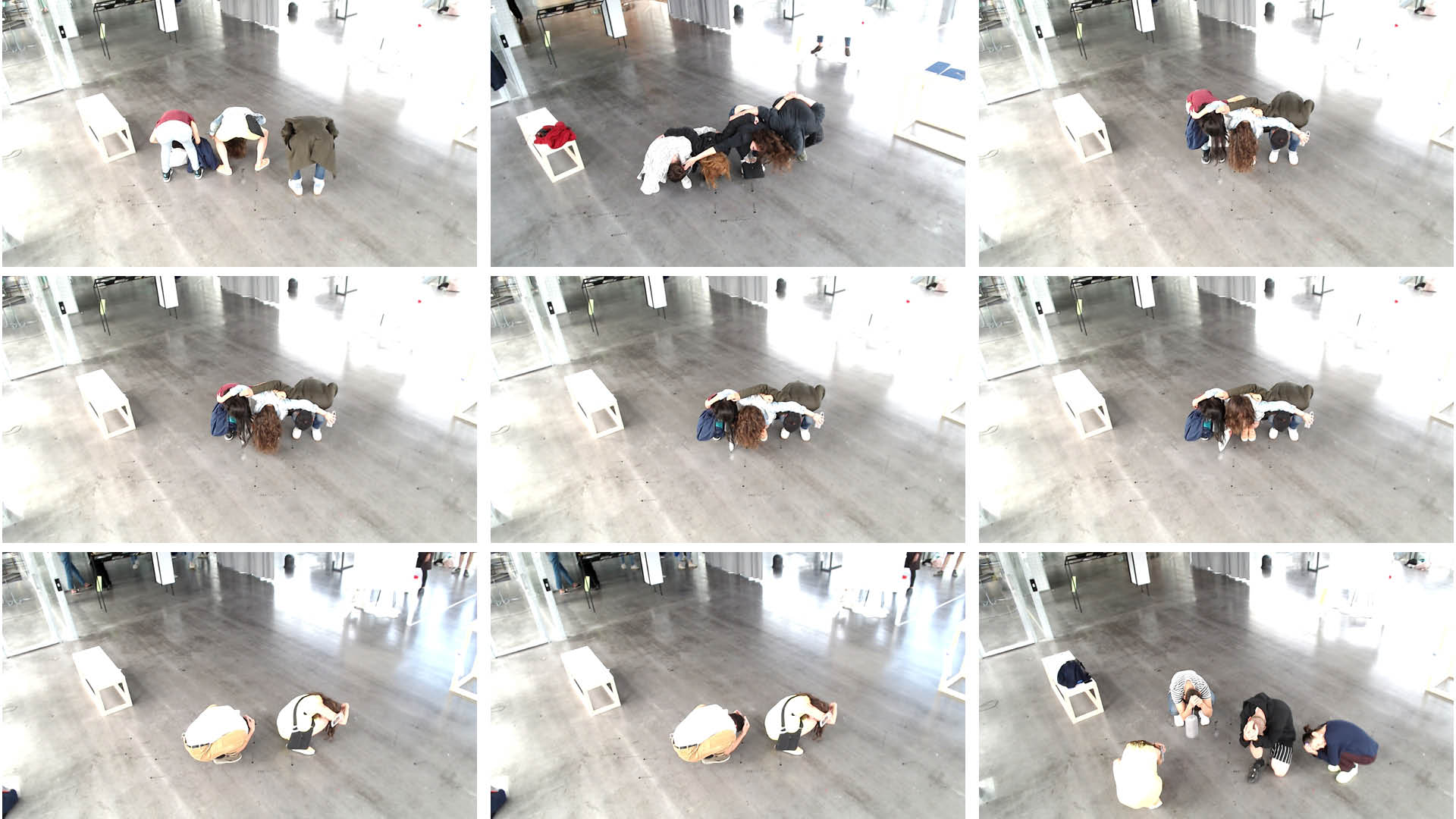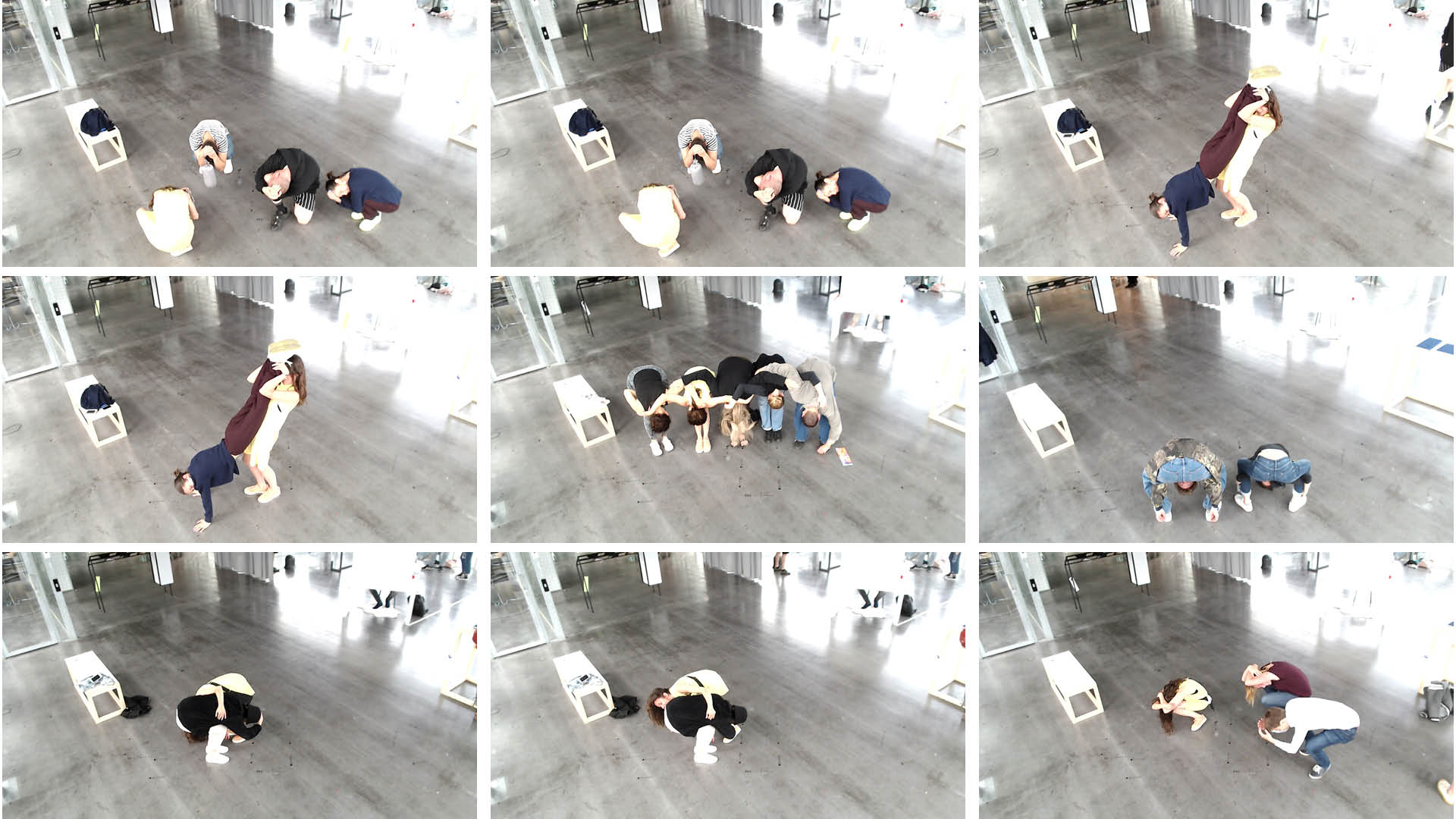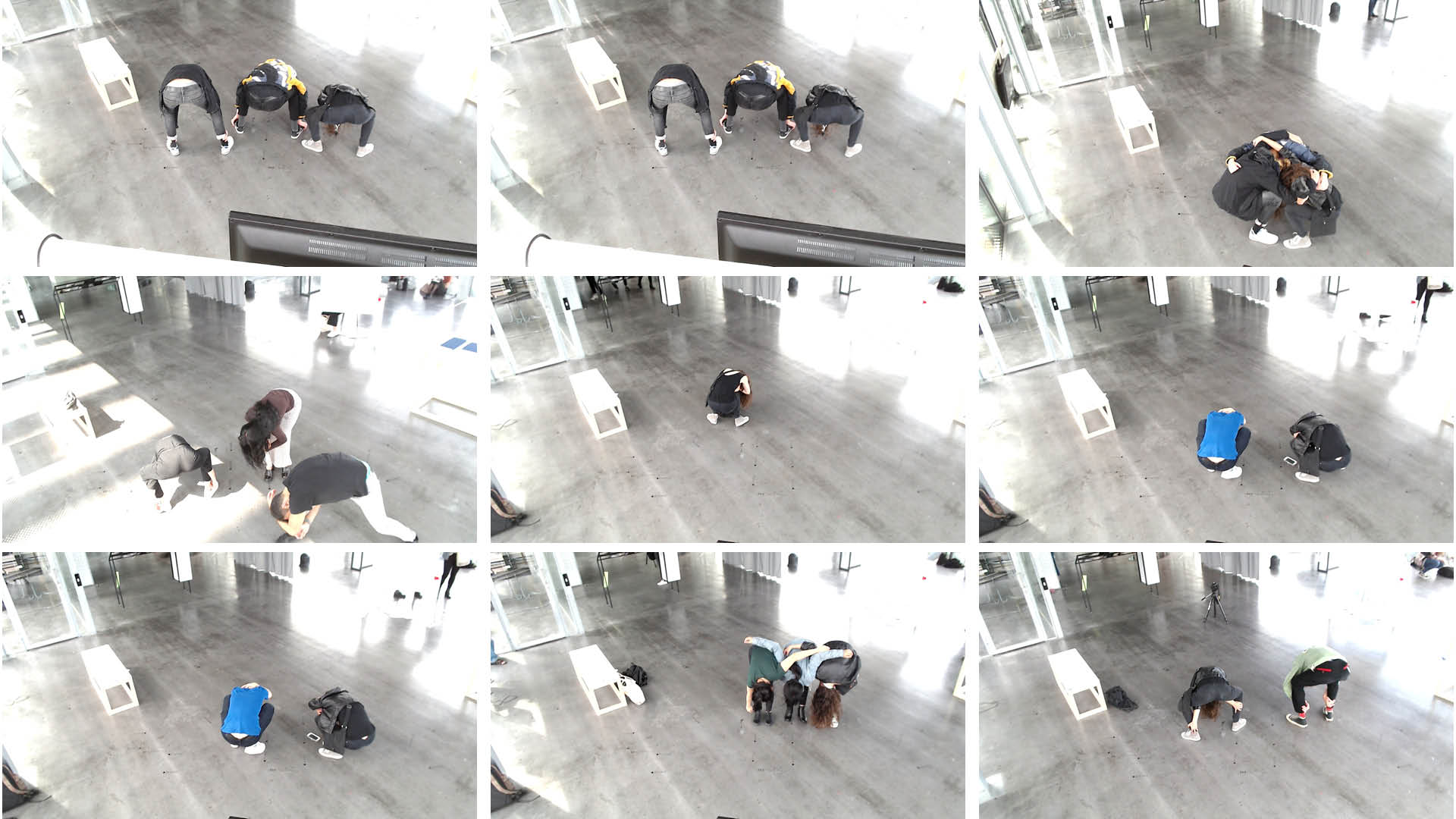Ground Truth
interactive installation, performative camouflage
Complex human activities can be characterised as compositions of simpler actions. A person is a "set of informative skeletal joints" that "present a continuous evolution of spatial configurations". Ground Truth is a speculative study in computer vision and an attempt to challenge the current notion of "human", adopted by many developers. Training convolutional neural networks in detecting human activity and classifying human instances, their traits, and behaviour patterns, receives sustained attention nowadays, mainly by military forces and private corporations. Behaviour templates are projected on individuals and crowds, with the main goal of recognising patterns of interactions, anomalous events, and deviant actions. By building a vocabulary of activities, machine learning datasets come to represent clichés of social constructs and abstract our personal experiences into list of annotated data. This has the potential to enforces conformity to a single prevailing mode and ideology of power.
Ground Truth is a collection of camouflage techniques meant to render individuals invisible in plain sight. More precisely, an exploration of mechanisms for escaping the algorithmic uniforms we involuntary acquire. Based on military and natural camouflage, the series of movements proposes alternative modes of social presence and interactions, meant as performative tools for masking visibility in order to confront such predictive technologies.
presented Graduation Show, Royal Academy of Art The Hague, NL 2019
